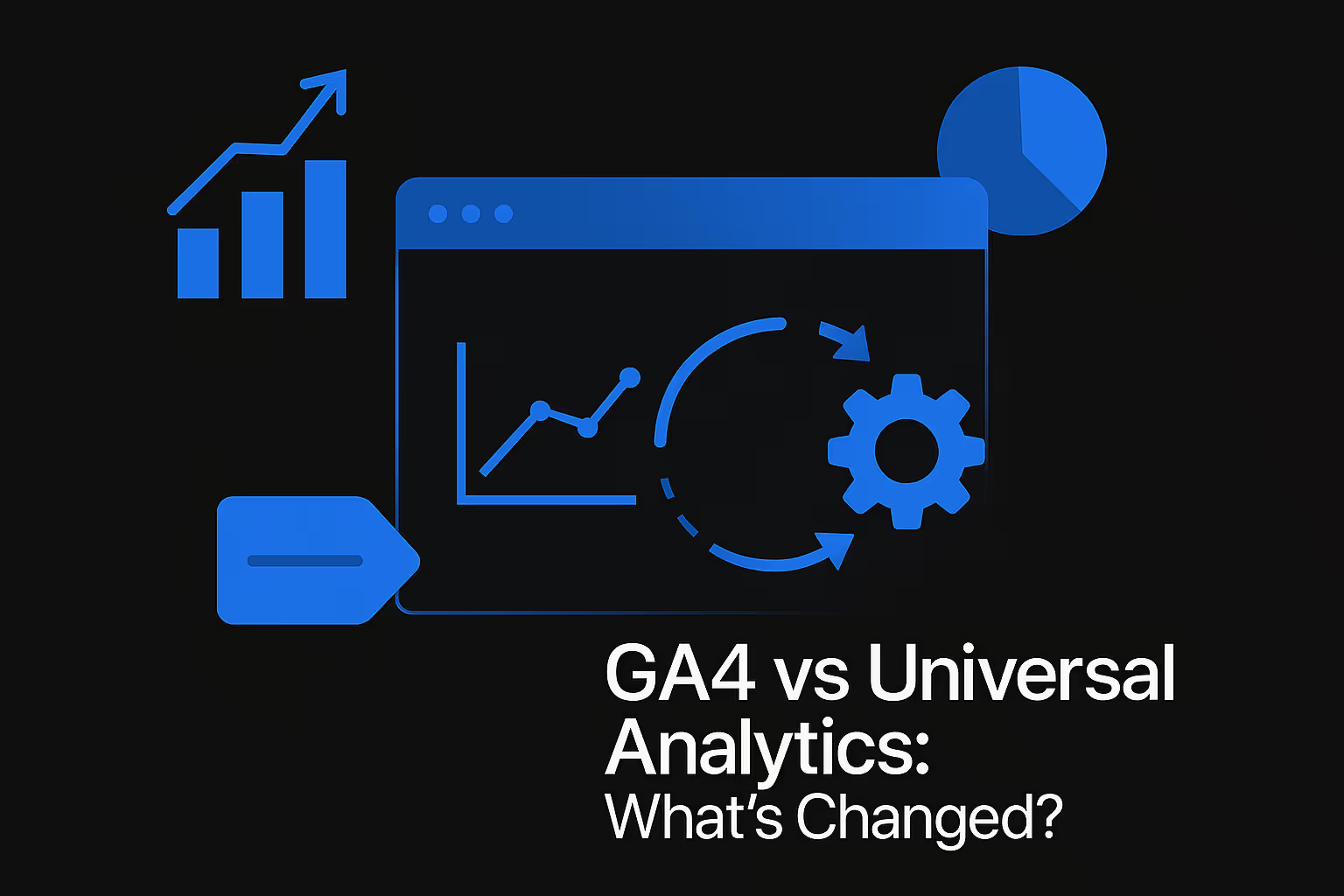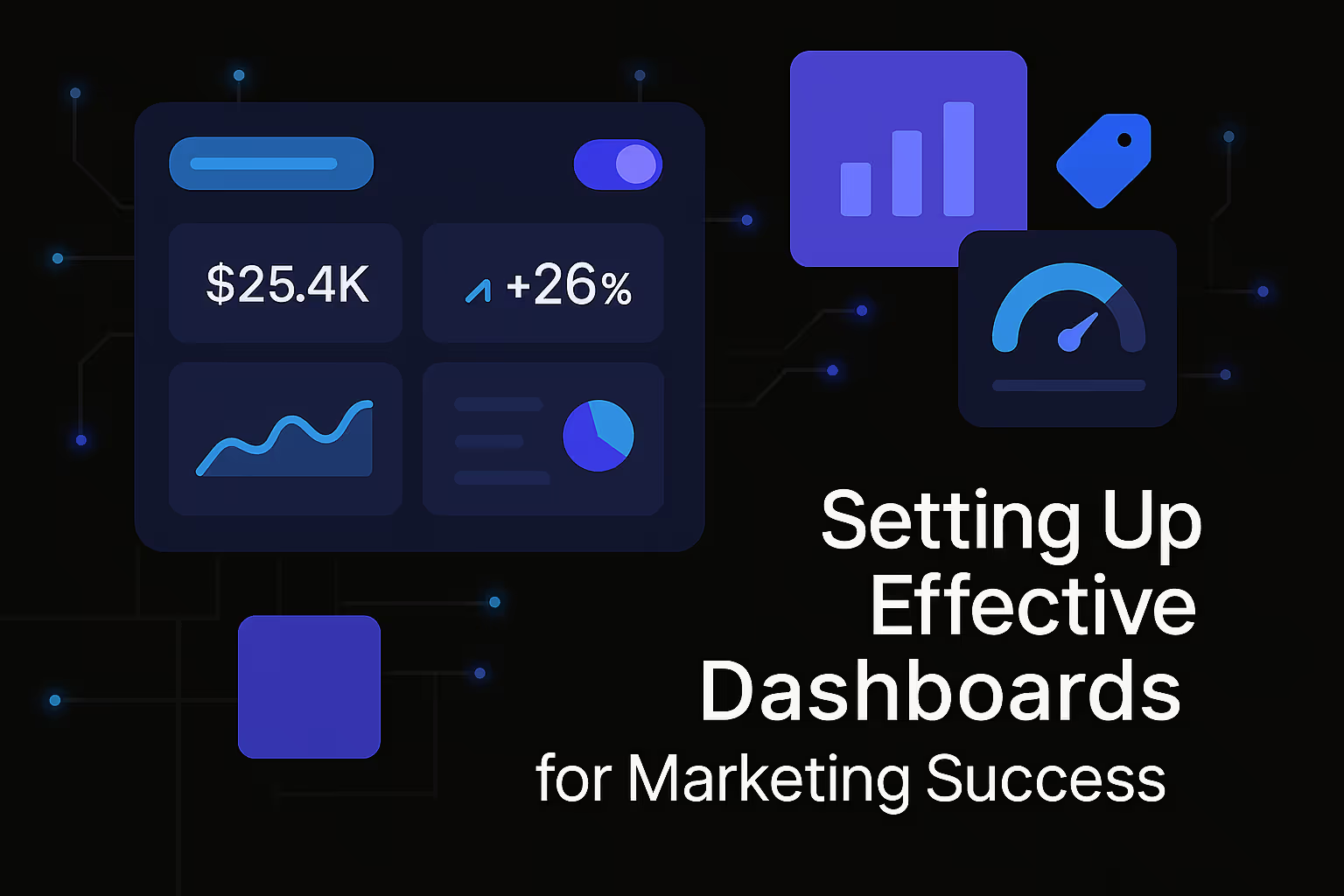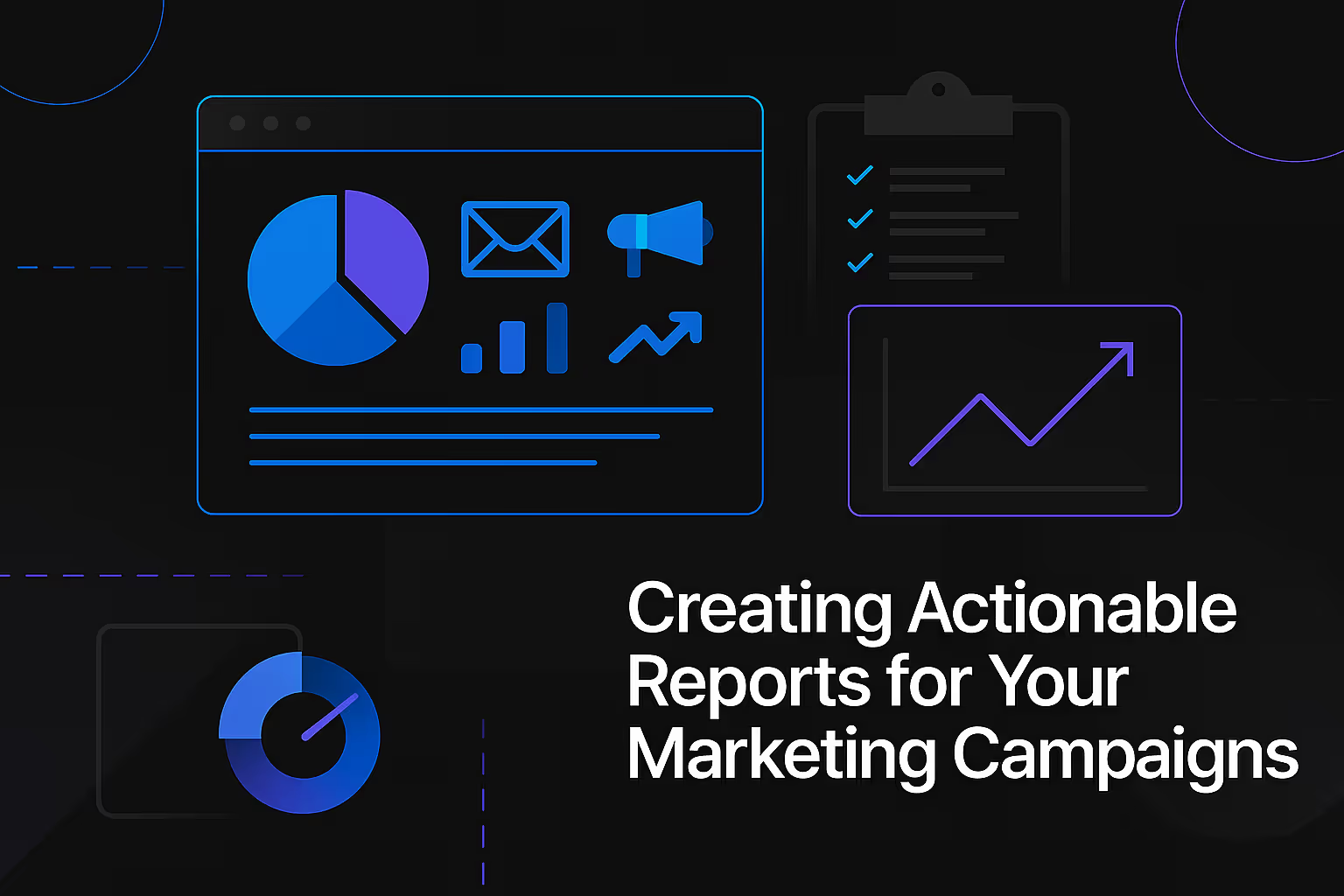GA4 vs Universal Analytics: What’s Changed?

The landscape of digital analytics has undergone a monumental transformation, marking the end of an era for Universal Analytics (UA) and ushering in the powerful, future-forward capabilities of Google Analytics 4 (GA4). For years, Universal Analytics served as the cornerstone for understanding website performance, providing invaluable insights into user behavior, traffic sources, and conversion paths. Its session-based data model became the industry standard, shaping how marketers, analysts, and business owners perceived their digital presence. However, as the digital world evolved, with the proliferation of mobile apps, cross-device user journeys, and an increasing emphasis on user privacy, the limitations of UA became increasingly apparent. The deprecation of Universal Analytics on July 1, 2023, for standard properties, and July 1, 2024, for 360 properties, was not merely an update but a fundamental reimagining of how we measure and interpret user interactions across diverse platforms. This shift to GA4 represents a proactive response to the complexities of modern digital ecosystems, offering a more holistic, user-centric, and privacy-aware approach to data measurement. Understanding the profound changes, from data models to reporting functionalities, is crucial for anyone navigating the intricate world of digital marketing and analytics in the contemporary era.
Universal Analytics: A Retrospective Look at the Foundation
For over a decade, Universal Analytics stood as the benchmark for web analytics, offering a robust framework for tracking and analyzing website performance. Its widespread adoption was a testament to its effectiveness in providing actionable insights, helping businesses optimize their online strategies.
Its Core: Sessions and Pageviews
At the heart of Universal Analytics lay its session-based data model. A session was defined as a group of user interactions with a website that occurred within a given timeframe, typically ending after 30 minutes of inactivity or at midnight. Within these sessions, UA meticulously tracked various interaction types, most notably pageviews. Every time a user loaded a page, it was recorded as a pageview, forming the foundational metric for understanding content consumption. Beyond pageviews, UA also captured events, e-commerce transactions, and social interactions, but these were largely contextualized within the confines of a session. This model provided a clear, albeit sometimes fragmented, view of user journeys. Marketers could easily see how many sessions their website received, the average session duration, and the bounce rate, offering a snapshot of engagement. The simplicity of this model made it accessible and widely understood, allowing for straightforward reporting and immediate insights into website traffic and basic user behavior.
Strengths and Limitations
The strength of Universal Analytics resided in its familiarity and its ability to provide clear, segmentable data based on sessions. It excelled at answering questions like "How many users visited my site?" and "Which pages are most popular?" Its predefined reports were intuitive, allowing users to quickly grasp performance metrics without extensive customization. The focus on pageviews and sessions made it relatively easy to compare website performance month-over-month or year-over-year.
However, as the digital landscape evolved, so did the challenges for UA. A significant limitation was its web-centricity. Universal Analytics was primarily designed for websites, struggling to seamlessly integrate and analyze data from mobile applications. This meant that businesses with both web and app presences often had fragmented views of their users, unable to track a complete customer journey across platforms. Furthermore, the session-based model became less adequate for understanding modern, non-linear user behaviors, where interactions might span multiple devices and occur over extended periods without fitting neatly into a single session. The rise of privacy regulations, such as GDPR and CCPA, also highlighted UA's challenges in adapting to a world increasingly focused on data privacy and cookie-less tracking. Its reliance on cookies for identifying users and tracking sessions made it less resilient in a privacy-first environment. While UA was a powerful tool for its time, these inherent limitations underscored the necessity for a more adaptable and comprehensive analytics solution.
Google Analytics 4: A Paradigm Shift
Google Analytics 4 is not simply an updated version of Universal Analytics; it represents a fundamental re-architecture of how user interactions are measured and understood. It marks a significant departure from the old model, offering a more flexible, user-centric, and future-proof approach to digital analytics.
The Event-Based Data Model: A Fundamental Rethink
The most profound change in GA4 is its adoption of an event-based data model. In contrast to UA's session-centric approach, every single user interaction in GA4 is treated as an event. This includes page views, clicks, scrolls, video plays, file downloads, app opens, and custom interactions. This unified model means that there are no predefined "hit types" like pageviews, events, transactions, or social interactions; everything is an event with parameters that provide additional context. For instance, a "page_view" is an event with parameters like page_location (URL) and page_title. This provides unparalleled flexibility, allowing for a much more granular and comprehensive understanding of user behavior. Businesses can define and track custom events that are highly relevant to their specific objectives, offering deeper insights into user engagement and conversion paths. This uniform event structure simplifies data collection across diverse platforms and allows for a more consistent interpretation of user actions, whether they occur on a website or within a mobile application.
Unified Data Streams: Web and App in Harmony
Another cornerstone of GA4 is its ability to handle unified data streams. Unlike Universal Analytics, which required separate properties for websites and apps, GA4 can collect data from both web and app platforms within a single property. This crucial capability provides a truly cross-platform view of the customer journey. A user who browses products on a website, adds items to a cart in an app, and then completes the purchase on another device can now be tracked as a single user journey within GA4. This unified perspective eliminates data silos and allows businesses to understand how users interact with their brand across all touchpoints, regardless of the device or platform. This holistic view is invaluable for modern marketing strategies, enabling more effective audience segmentation, personalized experiences, and optimized multi-channel campaigns. It moves beyond simply measuring website traffic to understanding the complete lifecycle of a customer, offering a truly 360-degree view of their engagement.
Key Differences Unpacked: UA vs. GA4
The shift from Universal Analytics to Google Analytics 4 involves a myriad of distinctions that fundamentally alter how data is collected, interpreted, and utilized. Understanding these core differences is essential for a successful transition and for maximizing the potential of the new platform.
Data Collection and Model: Session vs. Event
As previously highlighted, the most significant divergence lies in their fundamental data models. Universal Analytics operates on a session-based model, where interactions are grouped into discrete sessions. Metrics like bounce rate, pages per session, and average session duration are intrinsic to this model. A session starts, interactions occur (pageviews, events, transactions), and then the session ends. This structure can sometimes obscure the continuous nature of user engagement, especially across different visits or devices.
In stark contrast, GA4 employs an event-based model, where every single user interaction is an event. This includes what UA would consider pageviews, events, and transactions. For example, a pageview in GA4 is a page_view event. This unified approach provides unprecedented flexibility and granularity. It allows for a more seamless understanding of complex user journeys that might span multiple devices and involve diverse interactions. The event-based model also inherently supports the tracking of "enhanced measurement" events such as scrolls, outbound clicks, site search, video engagement, and file downloads, which often required custom setup in UA. This fundamental change in data collection methodology ensures that all interactions are treated equally, providing a more consistent and comprehensive view of user behavior.
User Engagement Metrics: New Ways to Measure
Due to the shift in data models, how user engagement is measured has also changed dramatically. Universal Analytics relied heavily on bounce rate, which defined a session with only one interaction (a single pageview). While simple, bounce rate didn't always reflect true engagement. A user might find exactly what they need on one page and leave satisfied, yet this would be counted as a "bounce."
GA4 introduces a more nuanced set of engagement metrics that move beyond the limitations of bounce rate. Key new metrics include engaged sessions, which are sessions lasting longer than 10 seconds, having a conversion event, or having 2 or more page or screen views. GA4 also provides engagement rate (the percentage of engaged sessions), average engagement time, and engaged sessions per user. These metrics offer a more accurate representation of how users are interacting with content, allowing businesses to gauge genuine interest and value rather than just initial impressions. Furthermore, the focus on user activity within the context of events allows for much richer analysis of specific engagement points, providing a clearer picture of how users interact with crucial elements on a site or app.
Reporting and Interface: A New Frontier
The user interface and standard reports in GA4 are notably different from Universal Analytics, reflecting the underlying data model change and a greater emphasis on the user lifecycle. UA's reports were often organized by acquisition, behavior, and conversions, with predefined tables and graphs. While intuitive, they sometimes lacked flexibility for deep-dive analysis without significant customization.
GA4's reporting interface is organized around the user lifecycle: Acquisition, Engagement, Monetization, and Retention. This structure encourages a more holistic view of the customer journey, from how users arrive, to how they interact, how they convert, and how they are retained over time. The standard reports in GA4 are more high-level, providing overviews that can then be drilled down into using the powerful Explorations (formerly Analysis Hub) feature. Explorations offer a blank canvas for custom reporting, allowing analysts to build highly specific reports using techniques like Free-form, Funnel exploration, Path exploration, Segment overlap, and User explorer. This shift empowers users to ask more complex questions of their data and uncover deeper, more tailored insights than was easily possible in UA's standard reports. While the initial learning curve for GA4's interface can be steeper for UA veterans, the long-term benefits of its flexibility and customization capabilities are substantial.
Privacy-Centric Design: Adapting to a New Era
One of the most compelling aspects of GA4's design is its strong emphasis on privacy. Universal Analytics relied heavily on third-party cookies for tracking, a method increasingly under scrutiny and facing deprecation from browsers. GA4 is built with a privacy-first approach, designed to operate effectively in a future with less reliance on traditional cookies and persistent identifiers. It offers enhanced controls for data collection, including consent mode, which allows businesses to adjust how Google tags behave based on users' consent choices. This ensures compliance with evolving privacy regulations like GDPR and CCPA, a critical consideration for global businesses. Furthermore, GA4 employs data modeling and machine learning to fill in gaps where explicit consent for data collection is not granted. This means that even with privacy restrictions, GA4 can provide insights into user behavior by leveraging statistical modeling to estimate the behavior of users who have not consented to full tracking. This capability ensures that businesses can still gain valuable insights even in increasingly privacy-aware environments, allowing for more robust and resilient measurement strategies without compromising user privacy. The platform also offers greater data retention controls, allowing users to specify how long their data is stored, aligning with privacy best practices.
Predictive Capabilities and Machine Learning
A standout feature that truly differentiates GA4 from Universal Analytics is its integration of machine learning and predictive capabilities. While UA provided historical data analysis, GA4 moves beyond this to offer insights into future user behavior. Leveraging Google's advanced machine learning algorithms, GA4 can provide predictive metrics such as:
- Purchase probability: The likelihood that a user who was active in the last 28 days will purchase in the next 7 days.
- Churn probability: The likelihood that a user who was active in the last 7 days will not be active in the next 7 days.
- Revenue prediction: The predicted total revenue from all purchase events in the next 28 days from a user who was active in the last 28 days.
These predictive insights are invaluable for proactive marketing and business strategies. They enable businesses to identify users at risk of churning, target users with high purchase intent, and forecast future revenue, leading to more effective marketing campaigns and resource allocation. The integration of machine learning also powers automatic insights, surfacing anomalies and trends in data that might otherwise go unnoticed, further empowering data-driven decision-making. This shift from purely descriptive analytics to predictive analytics is a game-changer, offering a significant competitive advantage to businesses that leverage GA4's full potential.
The Imperative to Migrate: Why the Shift Matters
The transition from Universal Analytics to Google Analytics 4 is not merely a technical upgrade; it's a strategic imperative for any business serious about understanding its digital performance in the modern era. The end of UA support signifies a definitive move towards a more advanced and adaptable analytics paradigm.
Future-Proofing Your Analytics Strategy
The digital world is in constant flux, driven by rapid technological advancements and evolving user expectations. Universal Analytics, while foundational, was built for a web landscape that is increasingly outdated. Its limitations in tracking cross-platform journeys and its reliance on traditional cookie-based tracking made it less resilient to future changes. Migrating to GA4 is about future-proofing your analytics strategy. GA4's event-based model and its design for privacy compliance mean it is better equipped to handle a future with reduced reliance on third-party cookies, stricter data privacy regulations, and the ongoing convergence of web and app experiences. By adopting GA4, businesses are investing in a measurement solution that is designed to adapt and thrive amidst these ongoing shifts, ensuring continuous and reliable data collection and analysis for years to come. This proactive move minimizes the risk of data blind spots as the industry continues to evolve.
Unlocking New Insights
Beyond mere continuity, GA4 unlocks entirely new categories of insights that were either impossible or extremely difficult to obtain with Universal Analytics. The unified data streams provide a holistic view of the customer journey across web and app, allowing businesses to truly understand cross-device behavior and multi-touch attribution. This means seeing the full picture of how users interact with your brand, not just fragmented glimpses from individual platforms. The granular event-based data model allows for unprecedented flexibility in tracking specific user actions, enabling a deeper understanding of engagement and conversion funnels. For instance, you can track every scroll, every video play percentage, and every specific button click, providing a rich tapestry of user behavior. Furthermore, GA4's machine learning capabilities provide predictive insights, moving beyond historical reporting to forecasting future user behavior. This ability to predict churn or purchase intent allows for highly targeted marketing interventions, optimizing resource allocation and driving more effective campaigns. These advanced insights empower businesses to make more informed, proactive decisions, leading to improved user experiences and ultimately, better business outcomes.
Navigating the Transition: Best Practices for Migration
The transition to Google Analytics 4, while necessary, requires careful planning and execution to ensure data continuity and a smooth adoption process. It is not simply a matter of "flipping a switch" but rather a strategic project with several key considerations.
Dual Tagging and Data Parity
A crucial best practice during the migration phase is dual tagging. This involves running both Universal Analytics and Google Analytics 4 properties concurrently for a period. Dual tagging allows you to continue collecting historical data in UA while simultaneously accumulating fresh data in GA4. This overlap period is invaluable for several reasons. Firstly, it provides a crucial opportunity to validate data parity between the two platforms. By comparing key metrics and event counts, you can identify discrepancies and troubleshoot any issues with your GA4 implementation, ensuring that your new data collection is accurate and reliable. Secondly, it allows your teams to familiarize themselves with the GA4 interface and reporting structure without the pressure of losing historical UA data. This phased approach minimizes disruption and builds confidence in the new platform. It also gives you a benchmark to compare against once you fully transition, ensuring that you understand how metrics might differ due to the underlying data model changes.
Training and Adoption
One of the most overlooked, yet critical, aspects of a successful GA4 migration is comprehensive training and fostering adoption within your organization. GA4's different interface, data model, and reporting capabilities mean that users accustomed to Universal Analytics will need to adapt. Providing adequate training for your marketing, analytics, and product teams is paramount. This training should cover the new event-based data model, how to navigate the GA4 interface, how to build custom reports using Explorations, and how to interpret the new engagement metrics. Beyond formal training, fostering a culture of experimentation and encouraging users to actively engage with GA4's capabilities will accelerate adoption. Creating internal champions who can guide others and providing clear documentation and use-case examples will further support the transition. The goal is to empower users to leverage GA4's advanced features to derive meaningful insights, ensuring that the investment in the new platform translates into actionable business intelligence. Without proper training and a clear adoption strategy, the full potential of GA4 may remain untapped.
Beyond the Transition: Maximizing GA4's Potential
The migration to Google Analytics 4 is merely the first step. To truly harness its power, businesses must look beyond the initial setup and actively leverage its advanced capabilities. Maximizing GA4's potential involves a continuous process of exploration, customization, and integration.
One of the most powerful aspects of GA4 lies in its unparalleled flexibility for custom event tracking. Unlike UA, where custom events often felt like an add-on, in GA4, everything is an event. This empowers businesses to meticulously track every meaningful interaction on their website or app, tailoring data collection precisely to their specific business objectives. Want to know how many users click a specific call-to-action within a particular blog post section? Or track granular progress through a multi-step form? GA4's event structure allows for this level of detail. By carefully planning and implementing a robust custom event strategy, businesses can gain deeply granular insights into user behavior that directly correlate with their unique KPIs, moving beyond generic traffic metrics to actionable engagement and conversion data.
Furthermore, GA4's integration with other Google products is a significant advantage. Its native connection with Google Ads allows for more effective campaign optimization by linking ad spend directly to key user behaviors and conversions within GA4. This seamless integration enables more precise audience targeting and bid adjustments, leading to improved return on ad spend. The deeper integration with Google BigQuery offers an entirely new dimension of analysis. GA4 allows for the export of raw, unsampled event data directly into BigQuery, providing analysts with the ability to run highly complex queries, combine GA4 data with other business data sources (like CRM or sales data), and perform advanced machine learning modeling. This capability moves beyond the limitations of standard reporting interfaces, opening up possibilities for predictive analytics, personalized customer journeys, and truly sophisticated data analysis that drives competitive advantage.
The Explorations section (formerly Analysis Hub) within GA4 is another powerful tool often underutilized. It's not just for generating custom reports; it's a dynamic workspace for deep-dive analysis. Features like Path Exploration allow analysts to visualize user journeys, identifying common paths and drop-off points, which is invaluable for optimizing user flows. Funnel Exploration enables the creation of highly customized funnels to analyze conversion rates at each step, revealing bottlenecks and opportunities for improvement. The ability to build custom audiences based on complex event sequences and user properties provides an unprecedented level of segmentation for marketing and personalization efforts. By regularly engaging with these advanced reporting and analysis features, businesses can uncover hidden insights, identify emerging trends, and continuously refine their digital strategies.
Finally, the shift to GA4 requires a continuous learning mindset. The platform is designed to evolve, with new features and improvements being rolled out regularly. Staying updated with these developments, actively experimenting with new functionalities, and adapting measurement strategies to leverage GA4's full potential will be key to long-term success. It's not just about transitioning away from Universal Analytics; it's about embracing a dynamic and powerful new era of analytics that promises deeper insights and more effective digital strategies.
Conclusion: Embracing the Future of Analytics
The transition from Universal Analytics to Google Analytics 4 marks a pivotal moment in the evolution of digital measurement. It is far more than a simple update; it represents a fundamental rethinking of how we track, analyze, and interpret user behavior in an increasingly complex and privacy-conscious digital landscape. Universal Analytics, with its session-based model and web-centric design, served its purpose admirably for many years. However, its limitations in handling cross-platform user journeys and adapting to new privacy paradigms necessitated a more advanced solution.
Google Analytics 4 rises to this challenge with its innovative event-based data model, which treats every user interaction as a distinct event, offering unprecedented granularity and flexibility. Its ability to unify data from both web and app properties provides a truly holistic view of the customer journey, breaking down data silos that previously hindered comprehensive analysis. Furthermore, GA4's inherent privacy-centric design, with features like consent mode and data modeling, positions it as a resilient solution for the future of measurement. The integration of machine learning and predictive capabilities empowers businesses to move beyond historical reporting, forecasting future user behavior and enabling more proactive and effective marketing strategies.
While the migration requires a dedicated effort, including meticulous dual tagging and comprehensive team training, the long-term benefits are substantial. By embracing GA4, businesses are not just complying with an industry shift; they are future-proofing their analytics infrastructure, unlocking deeper insights into user engagement, and gaining the predictive power necessary to navigate the dynamic digital landscape. The ability to understand the full customer lifecycle, from acquisition to retention, across all touchpoints, is no longer a luxury but a necessity for competitive advantage. As the digital world continues to evolve, Google Analytics 4 stands as the robust foundation upon which successful, data-driven strategies will be built, ensuring that businesses remain agile, informed, and ahead of the curve.
Similar Insights
Stay Updated with Our Insights
Join our newsletter for the latest trends and tips in web development and digital marketing.




